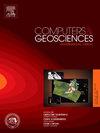深度学习对铁路土方工程表征表面波色散的自动拾取的贡献
IF 4.4
2区 地球科学
Q1 COMPUTER SCIENCE, INTERDISCIPLINARY APPLICATIONS
引用次数: 0
摘要
铁路轨道床(RT)是对支撑铁路轨道的路基结构的统称,对铁路网络的有效维护和修复具有重要意义。因此,全面了解铁路土方工程的力学状况是十分必要的。开发非破坏性和高效的表征REs的方法是一个优先事项。先前的研究已经研究了表面波表征RE的潜力。初步结果表明,这种方法是有效的,特别是在使用高产量采集装置(如landstreamer)时。然而,这些仪器产生的大量数据需要优化和自动化处理。人们正在探索深度学习(DL)在表面波数据自动化处理方面的潜力。在本研究中,主要目的是确定色散图像中的能量最大值和传播模式。我们选择了一个被称为“U-Net”的监督卷积神经网络(CNN)来执行分割任务。这个被称为“u -pick”的模型集成了两个U-net架构:一个用于最大值识别,另一个用于传播模式识别。训练数据集是使用代表法国高铁(HSL) RE结构的合成数据构建的。在合成数据集上的初步结果令人鼓舞,证明了能量最大值的准确识别和模态分类。然而,对现场数据集的预测表明,虽然能量峰值的识别精度很高,但模态分配证明不太令人满意,特别是在较高模态的情况下。最后,使用更标准的工具(如最大搜索、半自动和机器学习(ML)工具)对准确性和拾取时间进行比较。本文章由计算机程序翻译,如有差异,请以英文原文为准。
Deep learning contribution to the automatic picking of surface-wave dispersion for the characterization of railway earthworks
Railway Trackbed (RT), which collectively describes the subgrade structures that support rail tracks, is of great importance to the effective maintenance and rehabilitation of the rail network. Therefore, a comprehensive understanding of the mechanical condition of Railway Earthwork (RE) is necessary. The development of non-destructive and efficient methods for the characterization of REs is a priority. Previous studies have investigated the potential of surface waves for the characterization of RE. Preliminary results indicate that this approach is effective, particularly when using high yield acquisition setup such as landstreamer. However, these instruments generate an amount of data that necessitates optimized and automated processing. The potential of Deep Learning (DL) to automate the processing of surface wave data is being explored. In this study, the primary objective is to identify the energy maxima and propagation modes in dispersion images. A supervised convolutional neural network (CNN), designated as ‘U-Net’, was selected to perform segmentation tasks. This model, called ‘U2-pick’, integrates two U-net architectures: one for maxima identification and another for propagation mode identification. The training dataset was constructed using synthetic data that is representative of a French High-Speed-Line (HSL) RE structure. The preliminary outcomes on the synthetic datasets are encouraging, demonstrating accurate identification of energy maxima and mode classification. However, the predictions made on field datasets revealed that while the energy peaks were identified with a high degree of accuracy, the mode assignment proved to be less satisfactory, especially in the case of higher modes. Finally, a comparison of the accuracy and picking time was performed using more standard tools like maxima search, semi-automatic, and Machine Learning (ML) tools.
求助全文
通过发布文献求助,成功后即可免费获取论文全文。
去求助
来源期刊

Computers & Geosciences
地学-地球科学综合
CiteScore
9.30
自引率
6.80%
发文量
164
审稿时长
3.4 months
期刊介绍:
Computers & Geosciences publishes high impact, original research at the interface between Computer Sciences and Geosciences. Publications should apply modern computer science paradigms, whether computational or informatics-based, to address problems in the geosciences.
 求助内容:
求助内容: 应助结果提醒方式:
应助结果提醒方式:


